BRD4 inhibitor GNE987 exerts anti-cancer effects by targeting super-enhancers in neuroblastoma
- PMID: 35303940
- PMCID: PMC8932231
- DOI: 10.1186/s13578-022-00769-8
BRD4 inhibitor GNE987 exerts anti-cancer effects by targeting super-enhancers in neuroblastoma
Abstract
Background: Neuroblastoma (NB) is a common extracranial malignancy with high mortality in children. Recently, super-enhancers (SEs) have been reported to play a critical role in the tumorigenesis and development of NB via regulating a wide range of oncogenes Thus, the synthesis and identification of chemical inhibitors specifically targeting SEs are of great urgency for the clinical therapy of NB. This study aimed to characterize the activity of the SEs inhibitor GNE987, which targets BRD4, in NB.
Results: In this study, we found that nanomolar concentrations of GNE987 markedly diminished NB cell proliferation and survival via degrading BRD4. Meanwhile, GNE987 significantly induced NB cell apoptosis and cell cycle arrest. Consistent with in vitro results, GNE987 administration (0.25 mg/kg) markedly decreased the tumor size in the xenograft model, with less toxicity, and induced similar BRD4 protein degradation to that observed in vitro. Mechanically, GNE987 led to significant downregulation of hallmark genes associated with MYC and the global disruption of the SEs landscape in NB cells. Moreover, a novel candidate oncogenic transcript, FAM163A, was identified through analysis of the RNA-seq and ChIP-seq data. FAM163A is abnormally transcribed by SEs, playing an important role in NB occurrence and development.
Conclusion: GNE987 destroyed the abnormal transcriptional regulation of oncogenes in NB by downregulating BRD4, which could be a potential therapeutic candidate for NB.
Keywords: BRD4; Broad H3K27ac domain; Neuroblastoma; PROTAC; Super-enhancer.
© 2022. The Author(s).
Conflict of interest statement
The authors declare that they have no conflict of interest.
Figures
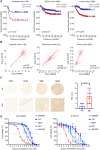
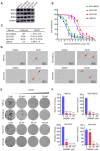


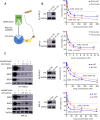
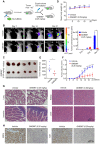
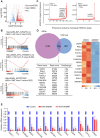
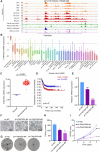
Similar articles
-
An inhibitor of BRD4, GNE987, inhibits the growth of glioblastoma cells by targeting C-Myc and S100A16.Cancer Chemother Pharmacol. 2022 Dec;90(6):431-444. doi: 10.1007/s00280-022-04483-7. Epub 2022 Oct 12. Cancer Chemother Pharmacol. 2022. PMID: 36224471 Free PMC article.
-
The BET PROTAC inhibitor GNE-987 displays anti-tumor effects by targeting super-enhancers regulated gene in osteosarcoma.BMC Cancer. 2024 Aug 1;24(1):928. doi: 10.1186/s12885-024-12691-y. BMC Cancer. 2024. PMID: 39090568 Free PMC article.
-
MZ1, a BRD4 inhibitor, exerted its anti-cancer effects by suppressing SDC1 in glioblastoma.BMC Cancer. 2024 Feb 16;24(1):220. doi: 10.1186/s12885-024-11966-8. BMC Cancer. 2024. PMID: 38365636 Free PMC article.
-
Super-enhancers and the super-enhancer reader BRD4: tumorigenic factors and therapeutic targets.Cell Death Discov. 2023 Dec 22;9(1):470. doi: 10.1038/s41420-023-01775-6. Cell Death Discov. 2023. PMID: 38135679 Free PMC article. Review.
-
Targeting complexes of super-enhancers is a promising strategy for cancer therapy.Oncol Lett. 2020 Sep;20(3):2557-2566. doi: 10.3892/ol.2020.11855. Epub 2020 Jul 10. Oncol Lett. 2020. PMID: 32782573 Free PMC article. Review.
Cited by
-
Fam163a knockdown and mitochondrial stress in the arcuate nucleus of hypothalamus reduce AgRP neuron activity and differentially regulate mitochondrial dynamics in mice.Acta Physiol (Oxf). 2025 Apr;241(4):e70020. doi: 10.1111/apha.70020. Acta Physiol (Oxf). 2025. PMID: 40071489 Free PMC article.
-
An inhibitor of BRD4, GNE987, inhibits the growth of glioblastoma cells by targeting C-Myc and S100A16.Cancer Chemother Pharmacol. 2022 Dec;90(6):431-444. doi: 10.1007/s00280-022-04483-7. Epub 2022 Oct 12. Cancer Chemother Pharmacol. 2022. PMID: 36224471 Free PMC article.
-
The BET PROTAC inhibitor GNE-987 displays anti-tumor effects by targeting super-enhancers regulated gene in osteosarcoma.BMC Cancer. 2024 Aug 1;24(1):928. doi: 10.1186/s12885-024-12691-y. BMC Cancer. 2024. PMID: 39090568 Free PMC article.
-
Histone methylation modification patterns and relevant M-RiskScore in acute myeloid leukemia.Heliyon. 2022 Sep 16;8(9):e10610. doi: 10.1016/j.heliyon.2022.e10610. eCollection 2022 Sep. Heliyon. 2022. PMID: 36164519 Free PMC article.
-
The role of FOXO4/NFAT2 signaling pathway in dysfunction of human coronary endothelial cells and inflammatory infiltration of vasculitis in Kawasaki disease.Front Immunol. 2023 Jan 9;13:1090056. doi: 10.3389/fimmu.2022.1090056. eCollection 2022. Front Immunol. 2023. PMID: 36700213 Free PMC article.
References
-
- Nakagawara A, Li Y, Izumi H, Muramori K, Inada H, Nishi M. Neuroblastoma. Jpn J Clin Oncol. 2018;48(3):214–241. - PubMed
-
- Whittle SB, Smith V, Doherty E, Zhao S, McCarty S, Zage PE. Overview and recent advances in the treatment of neuroblastoma. Expert Rev Anticancer Ther. 2017;17(4):369–386. - PubMed
-
- Wienke J, Dierselhuis MP, Tytgat GAM, Kunkele A, Nierkens S, Molenaar JJ. The immune landscape of neuroblastoma: challenges and opportunities for novel therapeutic strategies in pediatric oncology. Eur J Cancer. 2021;144:123–150. - PubMed
-
- Moreno L, Guo D, Irwin MS, Berthold F, Hogarty M, Kamijo T, Morgenstern D, Pasqualini C, Ash S, Potschger U, et al. A nomogram of clinical and biologic factors to predict survival in children newly diagnosed with high-risk neuroblastoma: an international neuroblastoma risk group project. Pediatr Blood Cancer. 2021;68(3):e28794. - PubMed
Grants and funding
- 81971867/National Natural Science Foundation of China
- 81970163/National Natural Science Foundation of China
- 81802499/National Natural Science Foundation of China
- 81872845/National Natural Science Foundation of China
- 81902534/National Natural Science Foundation of China
- 82072767/National Natural Science Foundation of China
- 52003183/National Natural Science Foundation of China
- SBK2019021442/Natural Science Foundation of Jiangsu Province
- BK20190185/Natural Science Foundation of Jiangsu Province
- BK20190186/Natural Science Foundation of Jiangsu Province
- BK20191175/Natural Science Foundation of Jiangsu Province
- No.16KJB310014/the Universities Natural Science Foundation of Jiangsu Province
- BE2021657/Jiangsu province's science and technology support program (Social Development)
- BE2021654/Jiangsu province's science and technology support program (Social Development) project
- BE2020659/Jiangsu Province Key R&D Program (Social Development) Projects
LinkOut - more resources
Full Text Sources
Molecular Biology Databases

